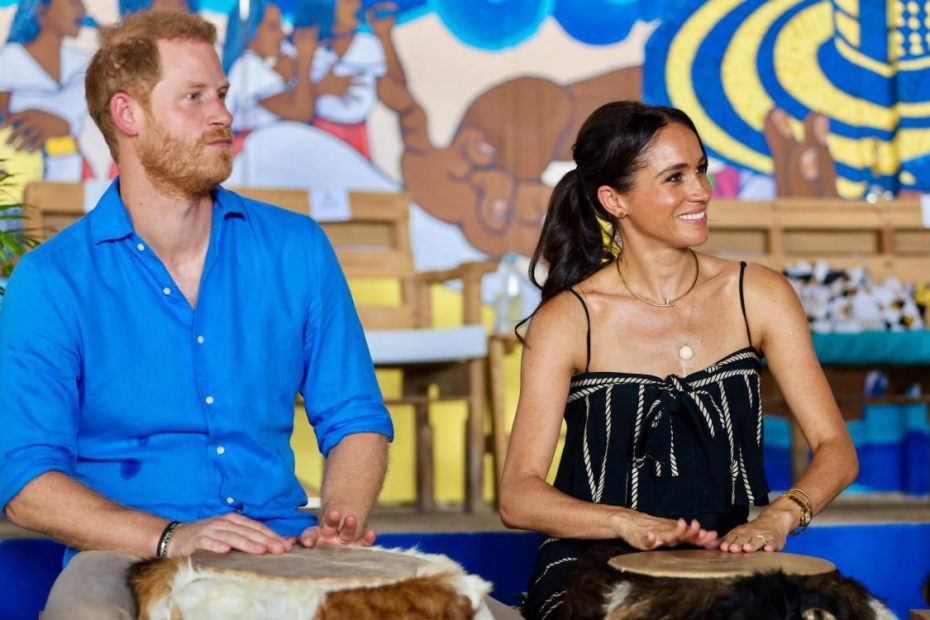Prince Harry should apologise for his family's role in the slave trade, residents of South America's first 'free city' have said.
On the third day of the Duke and Duchess of Sussex's quasi-royal tour of Colombia, the couple were welcomed to the central square of San Basilio by a group of musicians and children dressed in striking blue and white dresses.
The Duchess wore head-to-toe white, a sunhat and sunglasses, while Harry wore a blue shirt and beige trousers. As they entered the square, the couple stopped to look at the statue of Benkos Bioho, the city's founder, reaching out from a stone pillar while holding a chain.
Harry and Meghan were then treated to a performance by Kombliesa Mi, a local band known for the “rap of Palenque”.
A crowd of locals dressed in bright colours filled the square behind them.
Ahead of their arrival, locals said they hoped Harry would take the moment to apologise for the British Crown's role in the colonial slave trade.
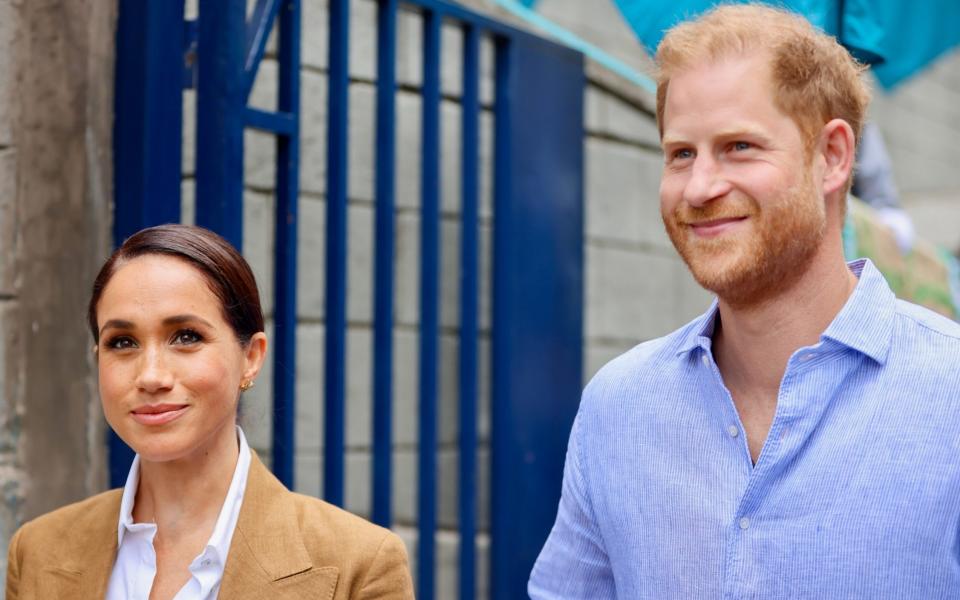

Harry has previously criticised the “unjust” system in which “enslaved people” generated wealth for the Crown, but he has not apologised for the role his family played in the oppressive system.
“I think he should do that [apologise]“to free our hearts and minds and ask for clemency,” said Segundo Caceres Reyes, 49, president of the city's local police.
Speaking from the turquoise police headquarters, he told The Telegraph: “We are in the process of forgiving and forgetting because we know how hard the facts are.”
Hairdresser Elida Canarte Diaz, 33, also said she thinks Harry should apologize.
She said, “His ancestors put our ancestors through terrible times and he can show good faith and remorse to show that they don't agree with what happened before.”
Ms Diaz, who is also a local artist, is among the group welcoming Harry and Meghan and showing them local crafts.
But she said she wouldn't ask Harry to show remorse for his family history, and that it would have to come from him.
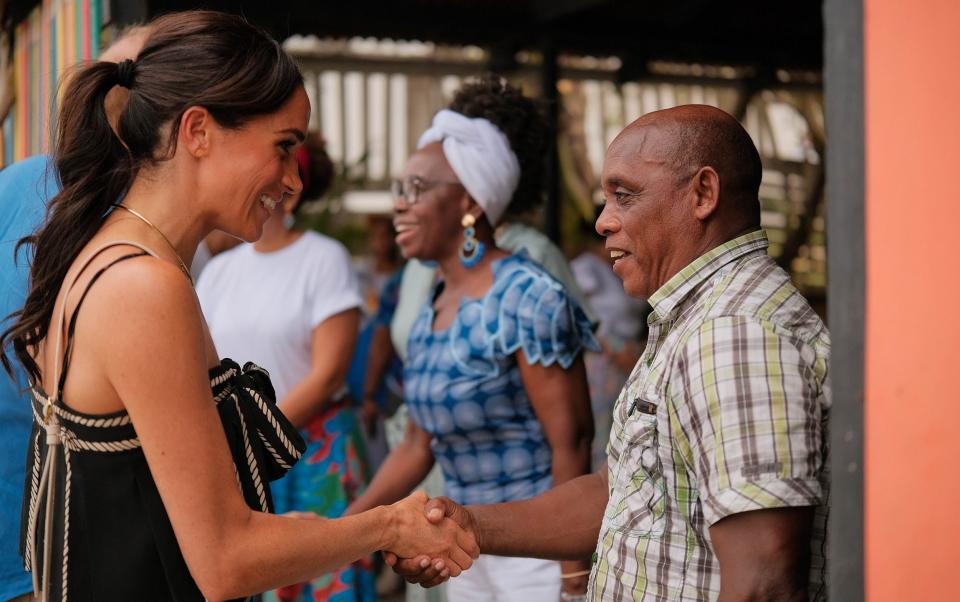

Francia Márquez, the vice president of Colombia who invited Harry and the duchess after watching their Netflix documentary, is one of the world's leading voices calling for reparations. She has set up a national commission to “repair the historical debt.”
Ms Marquez said she invited the Duke and Duchess of Sussex to Colombia partly because she sees them as a shared symbol of resistance and as two important voices against injustice.
“The Duke and Duchess came to Colombia… this is Colombia. This is where the roots of our ancestors and forefathers come from,” she told an audience at the local drum school, which also included members of her own family.
“A community like this cannot be displaced.”
She said it is important to preserve Colombian heritage and that the art of drumming symbolizes the freedom of black communities around the world.
Earlier, the Sussexes were greeted with a thundering welcome, after which they were told about the importance of preserving Cartagena's Afro-Colombian culture.
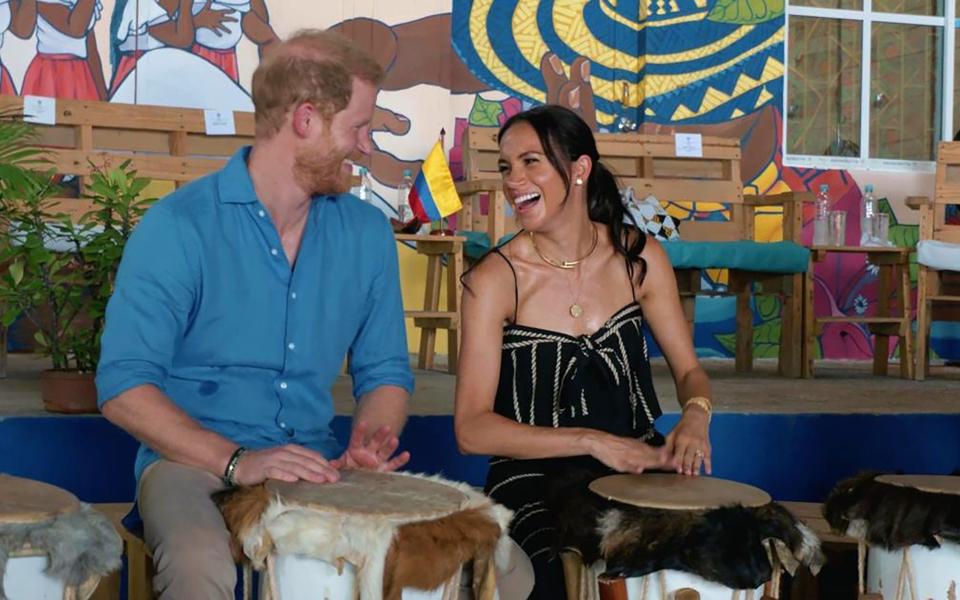

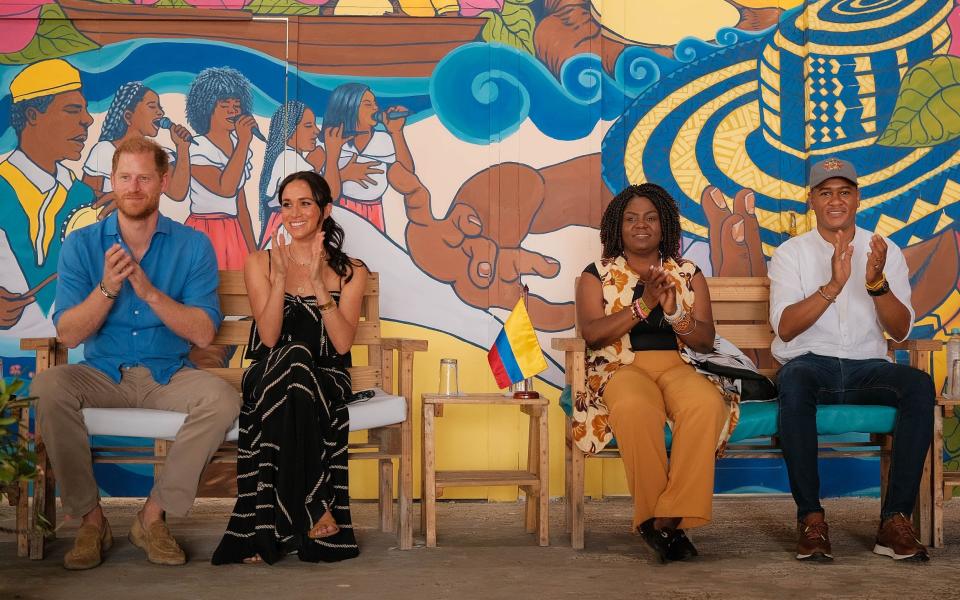

The Duke and Duchess and Mrs. Marquez took part in a drumming lesson led by the students, and were later roused to a performance by locals.
Rafael Ramos, the school's founder, said: “I love seeing Meghan's big smile – I can tell she's excited!”
The couple also received a small handmade wooden boat from a student, in honor of the coastal city and its beaches.
Edwin José Valdés Torres, 25, drummer in the band Kombilesa Mi that will perform for the couple, said: “We are waiting to see what they leave us for the development of the community. That would be very good to try to make up for what happened during colonization and the role that England played in the slavery of our ancestors.”
But he said he did not believe he should be forced to pay reparations to compensate the victims of colonialism.
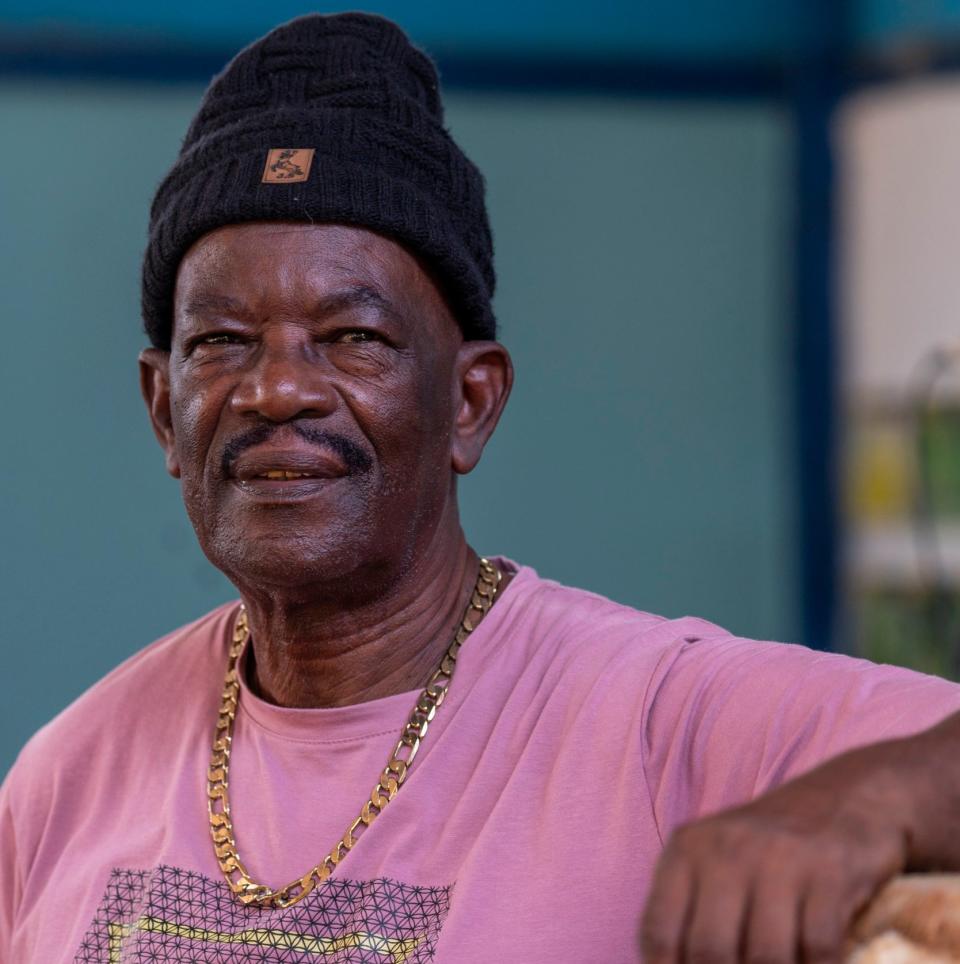

He said: “It's very complicated to ask for something like that, it's just that they acknowledge their part. It's not that they have to give x amount.”
While some residents, called Palenqueros, were eager to meet Harry and Meghan, several said they didn't even know who they were.
Justo Valdés, 70, the lead singer of the band Son Palenque, was rehearsing the town anthem at the cultural centre on Saturday morning to welcome the Duke and Duchess to the city.
“Who is Meghan?” he asked The Telegraph, before moving on to ask which country Harry was a prince of.
The town of about 3,500 inhabitants is located about 48 kilometers south of Cartagena and consists of about 10 streets with colorful houses and detailed murals.
Donkeys and chickens roamed the town as locals set up the sound system in the central square on Saturday morning and made preparations for the Duke and Duchess' arrival.
Others walked around with machetes slung over their shoulders as they prepared to harvest yucca, while some locals bent large branches into an arch for Harry and Meghan to walk under.
A group of Colombian soldiers and dozens of police officers were stationed across the city before Harry and Meghan arrived.
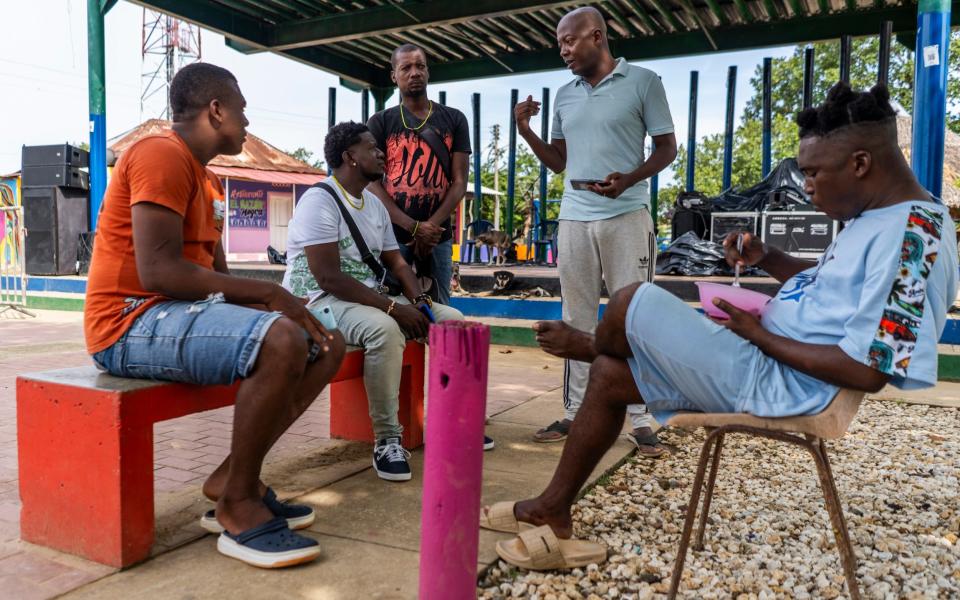

Some 3,000 police officers were deployed across Cartagena to protect them, while 250 uniformed officers were assigned to protect Mrs. Marquez and the Duke and Duchess.
On Friday, Harry and Meghan visited a school and then attended a private lunch hosted by Ms Marquez, where they talked about creating safe environments for children around the world.
Wearing a striking turquoise sleeveless dress by designer Oscar de la Renta, Meghan addressed the crowd in Spanish, saying she had enjoyed her trip to the South American country.
The Duke and Duchess' four-day quasi-royal tour began on Thursday in Bogota.
The trip to Colombia is the couple's second DIY “royal tour,” following their visit to Nigeria, since stepping down as working royals in 2020.
